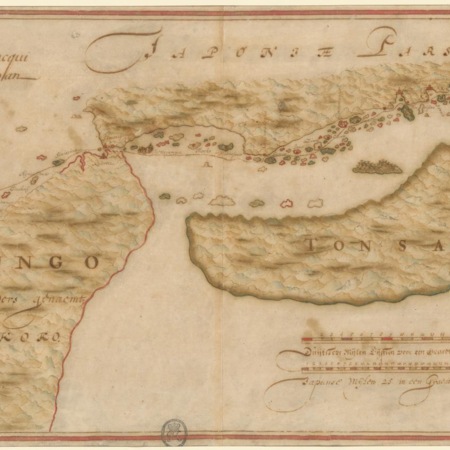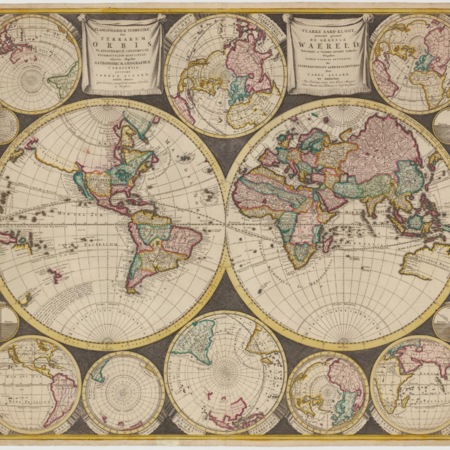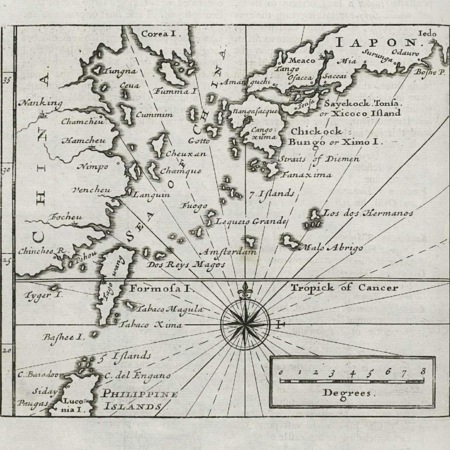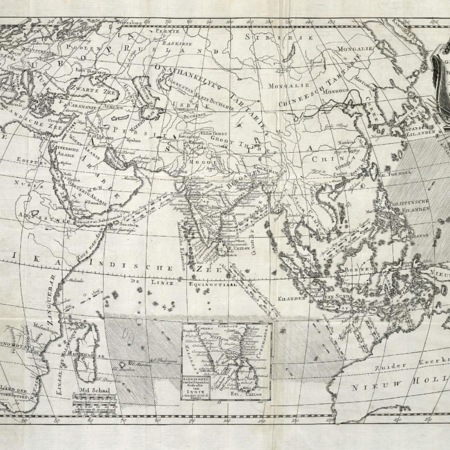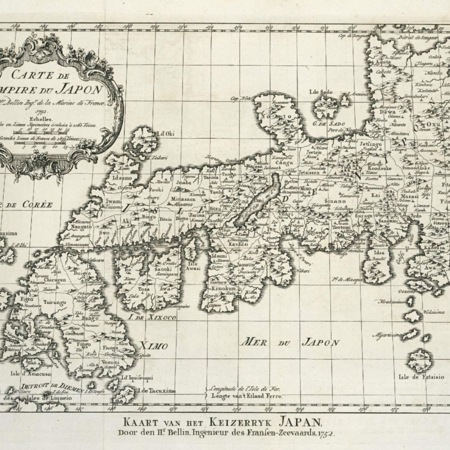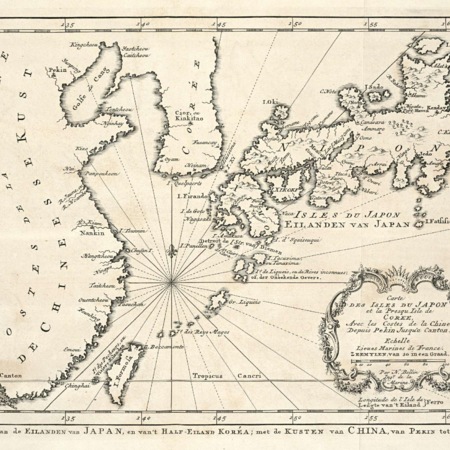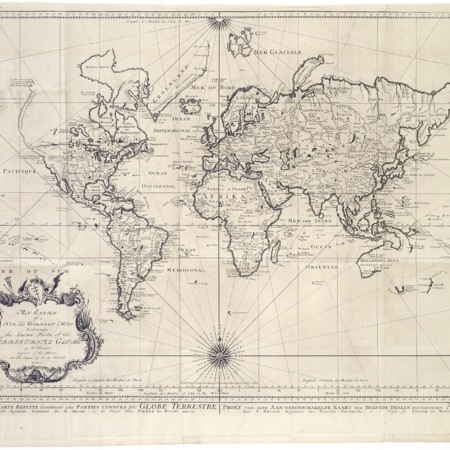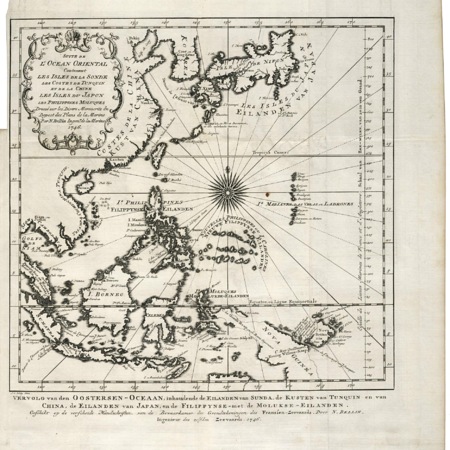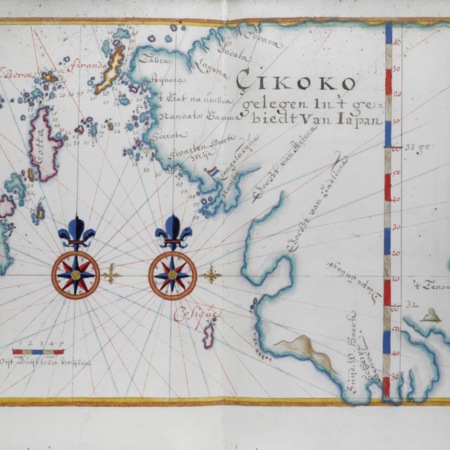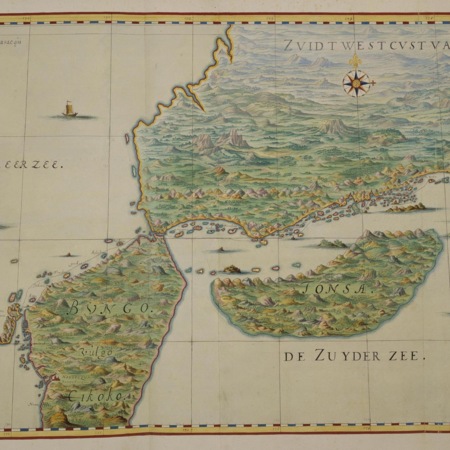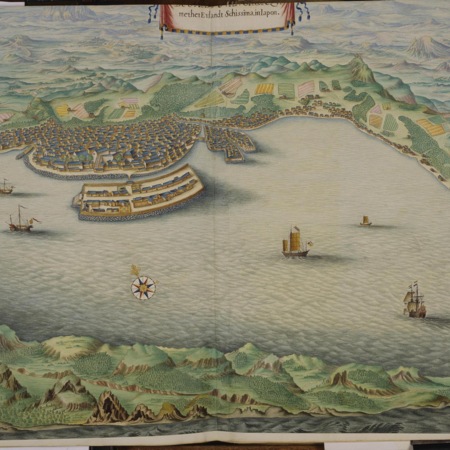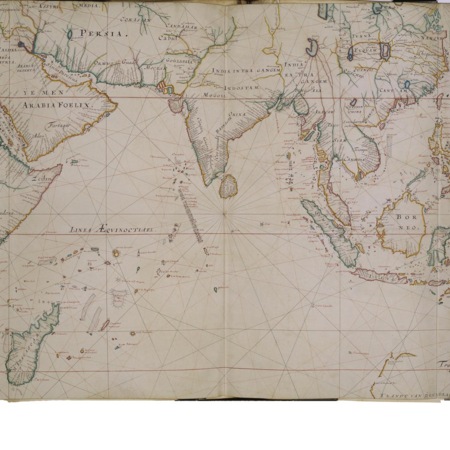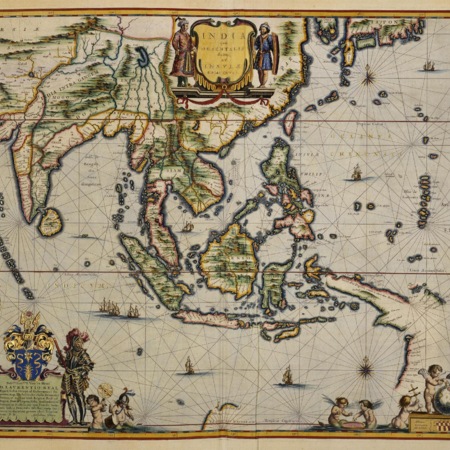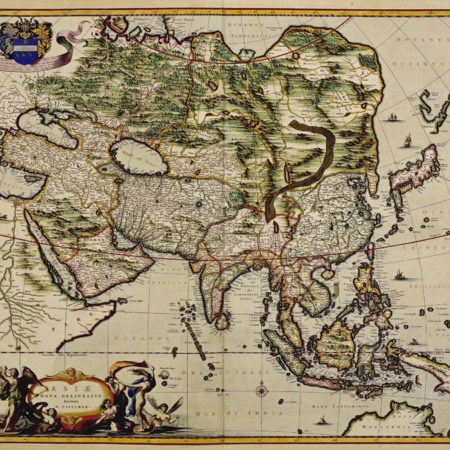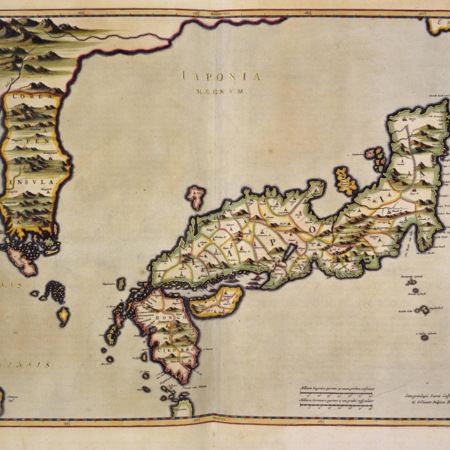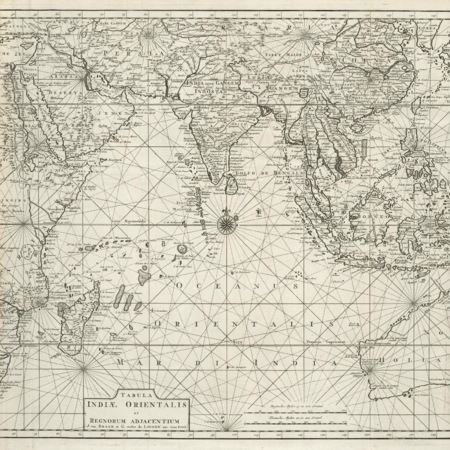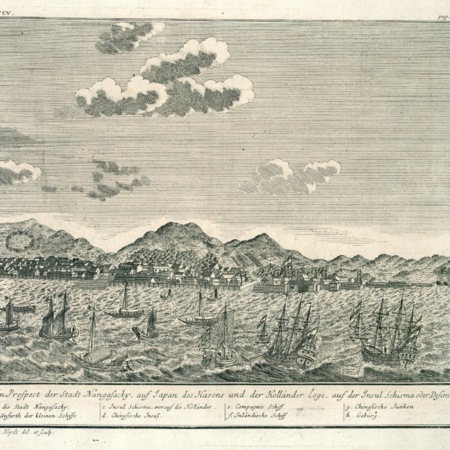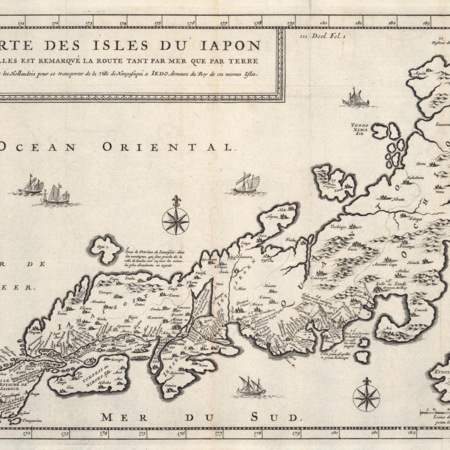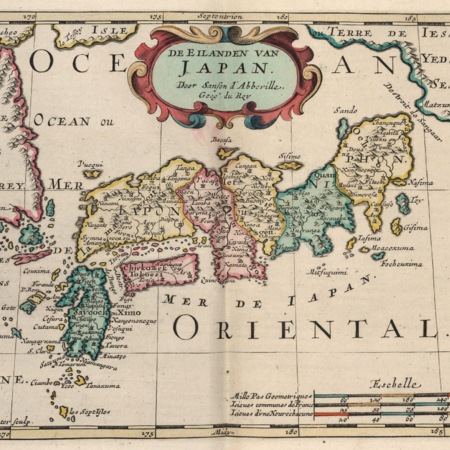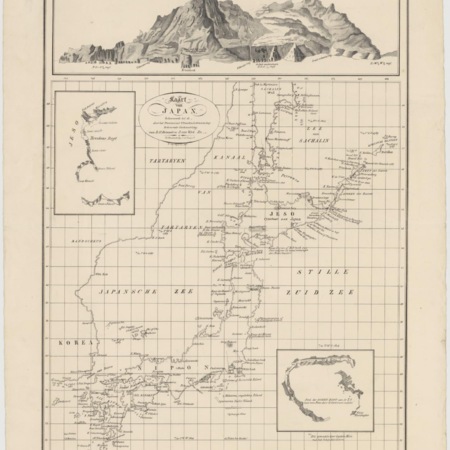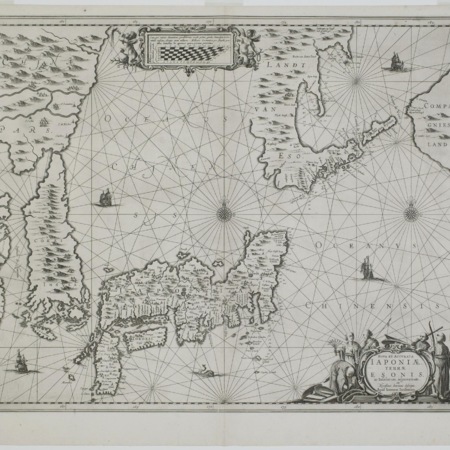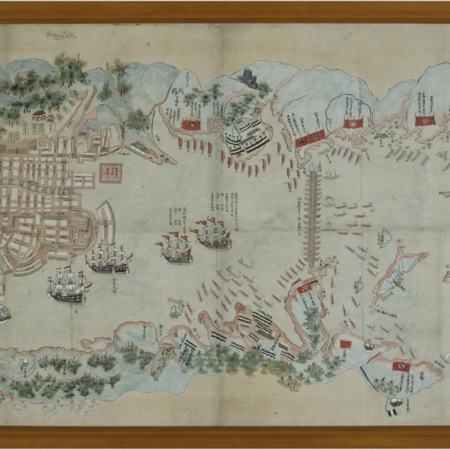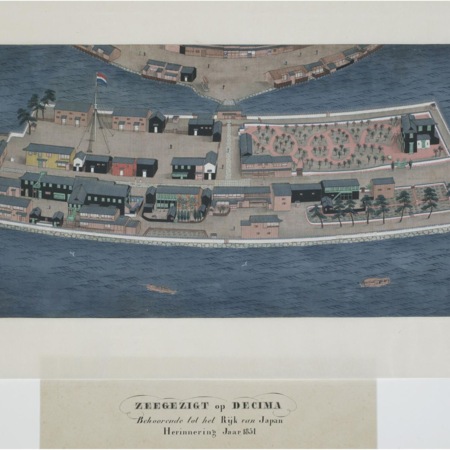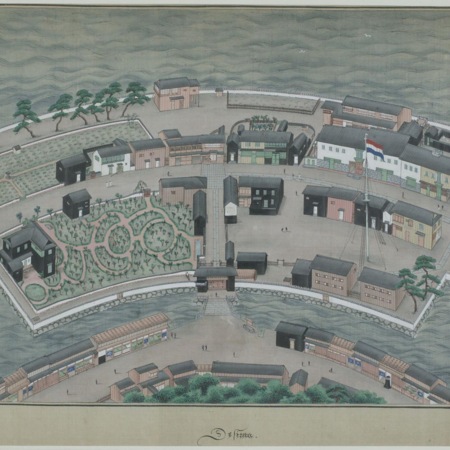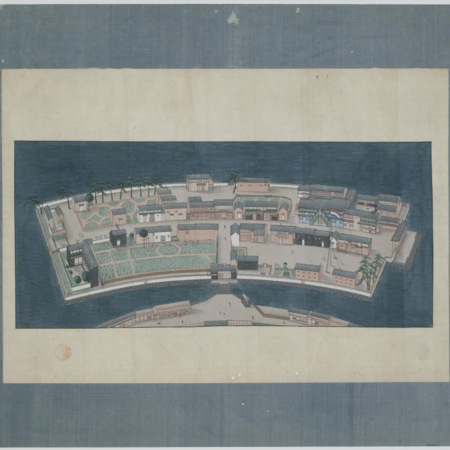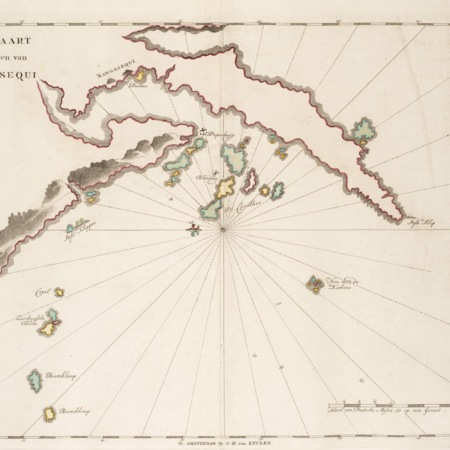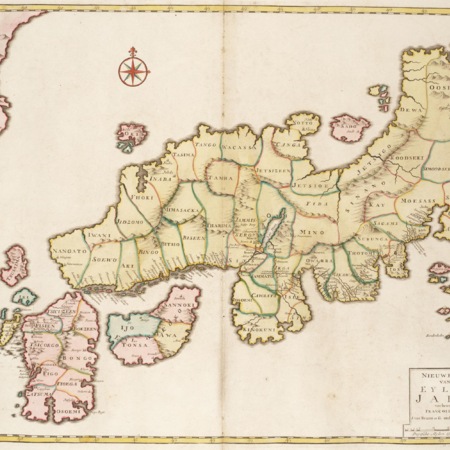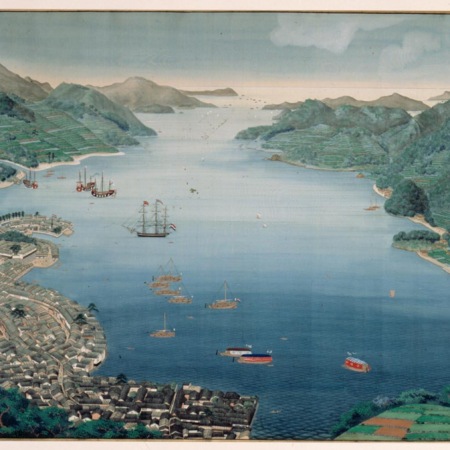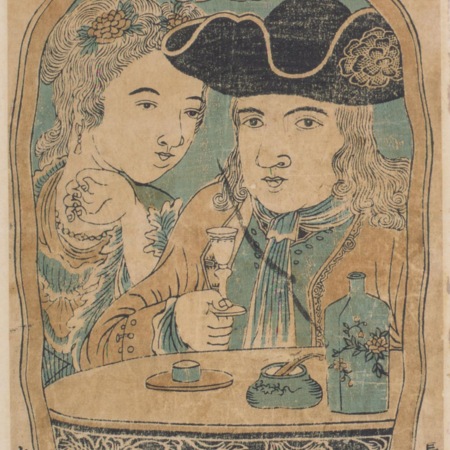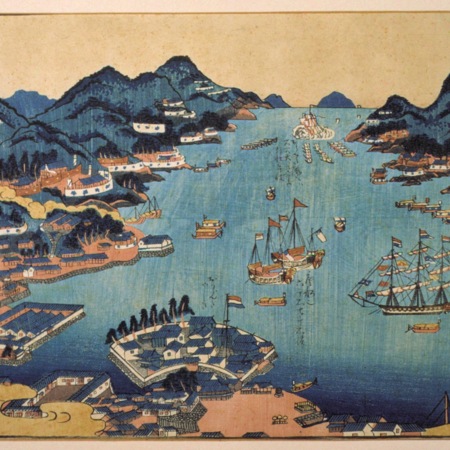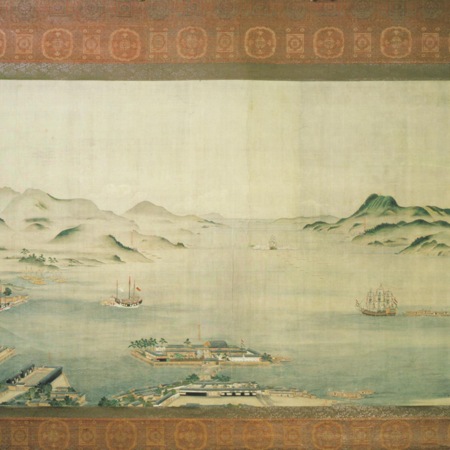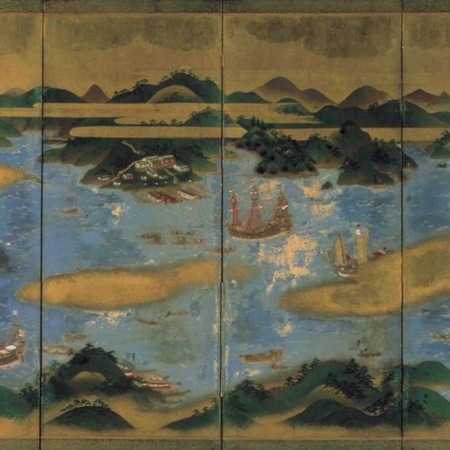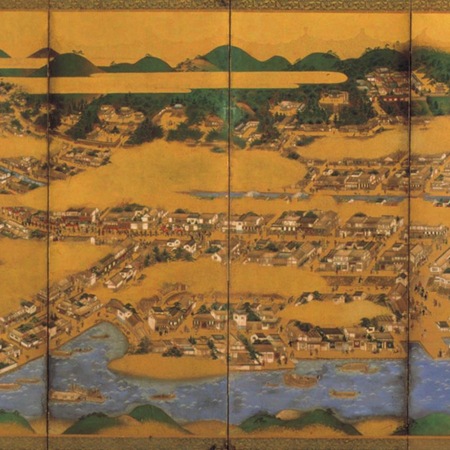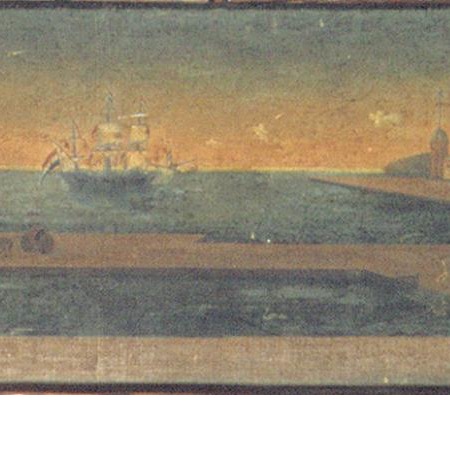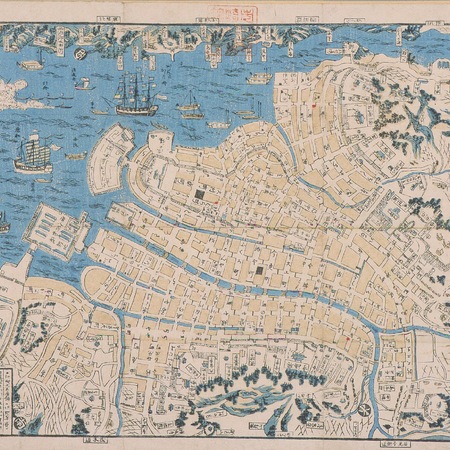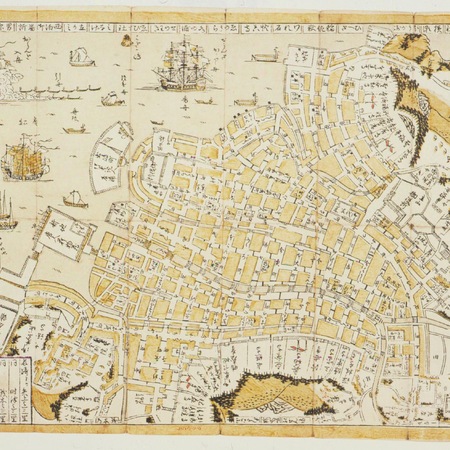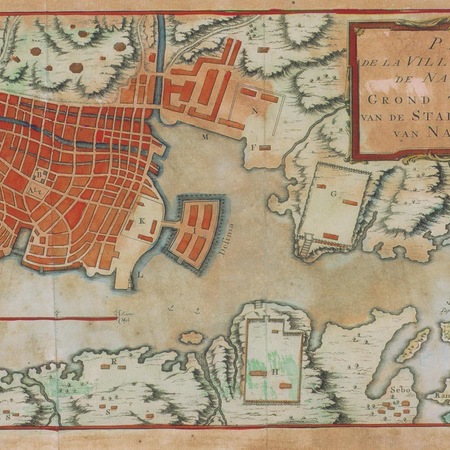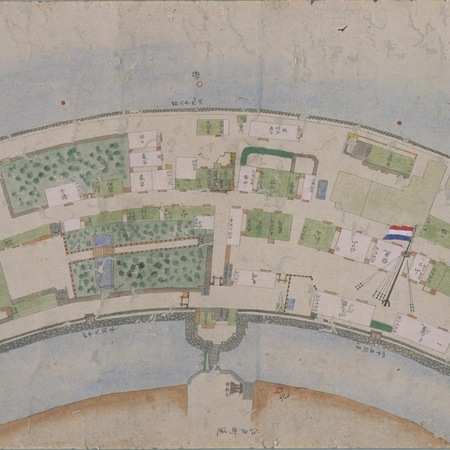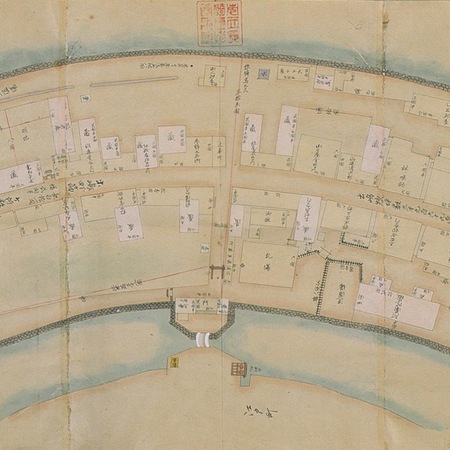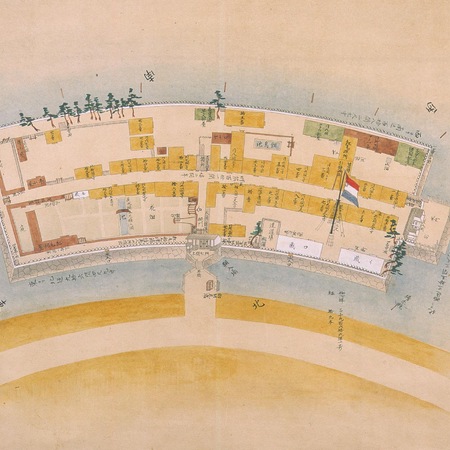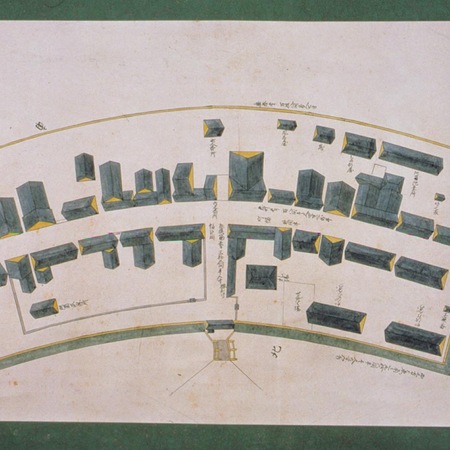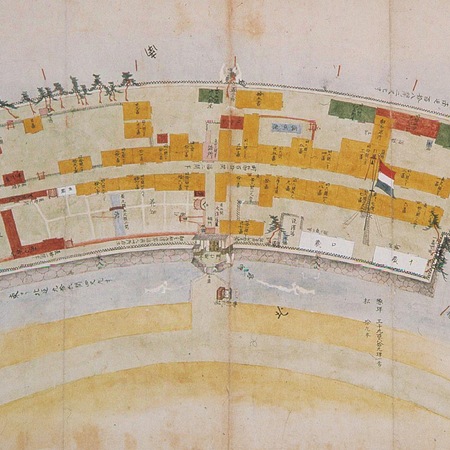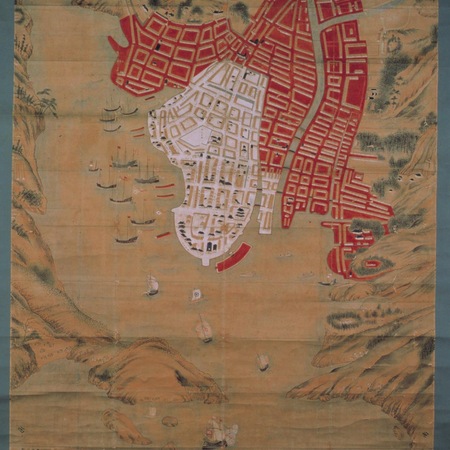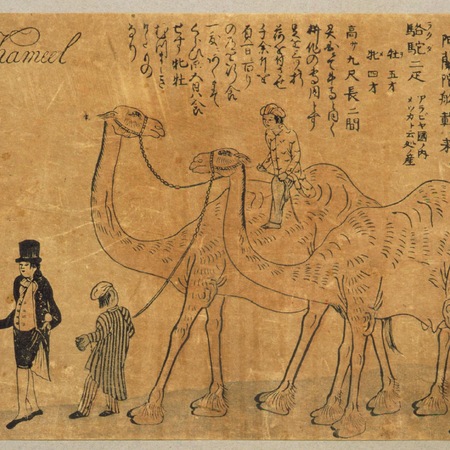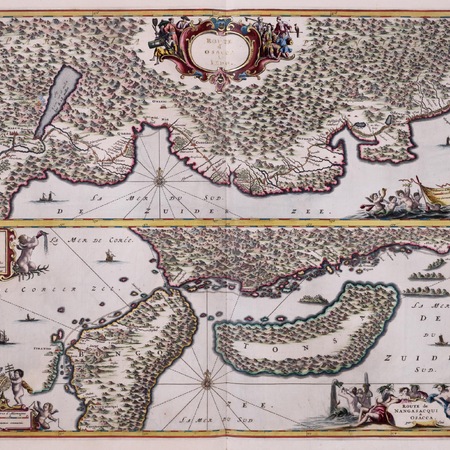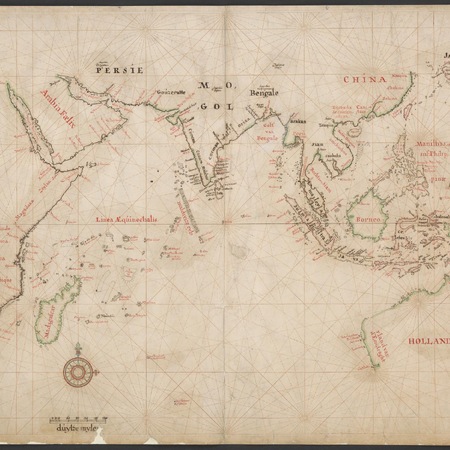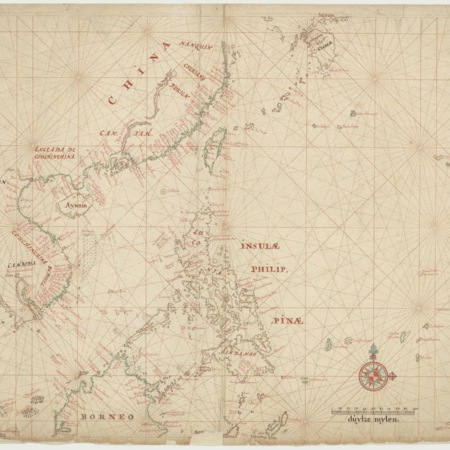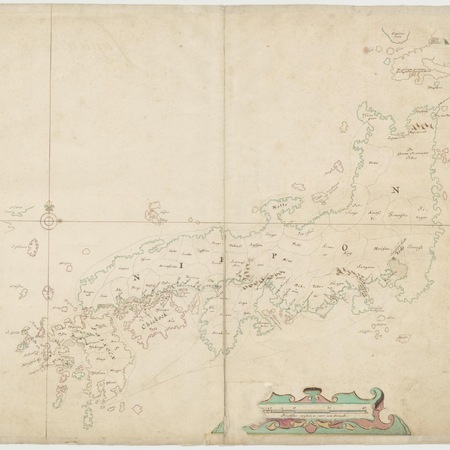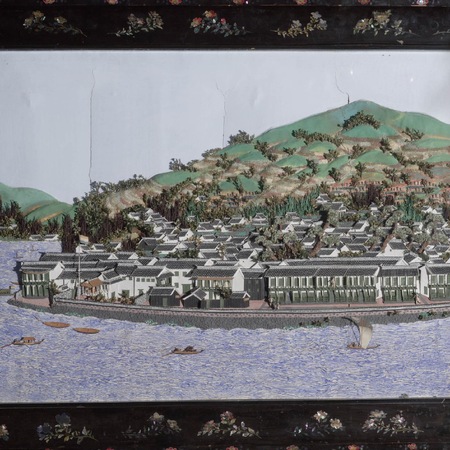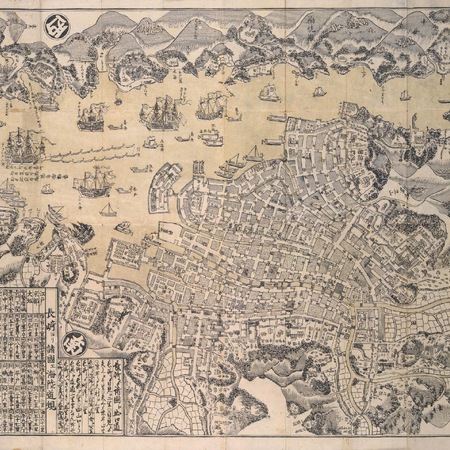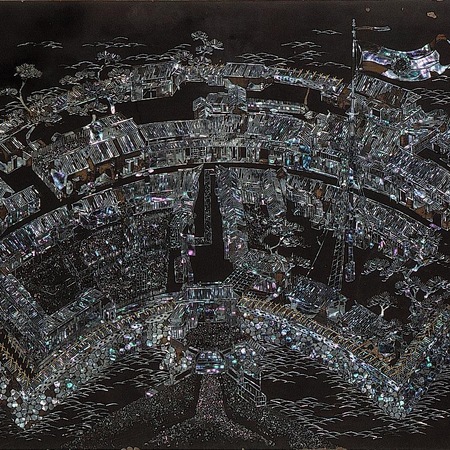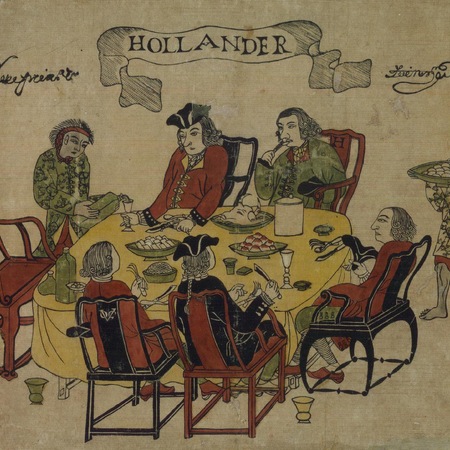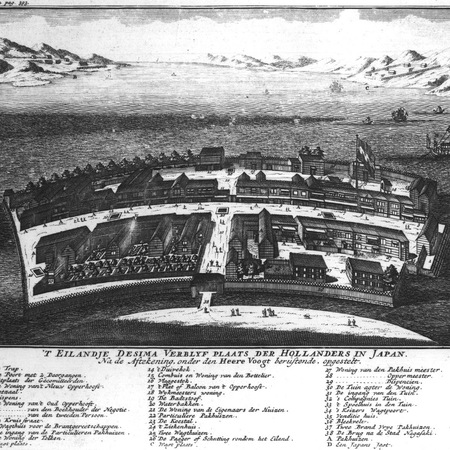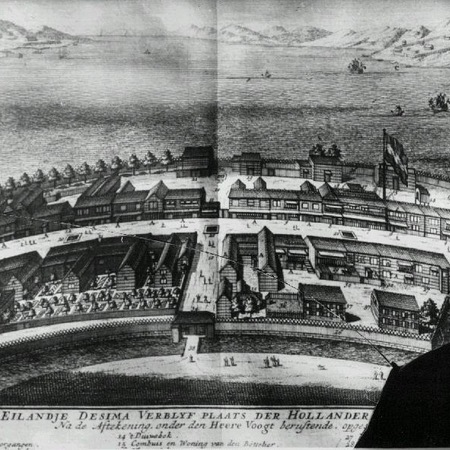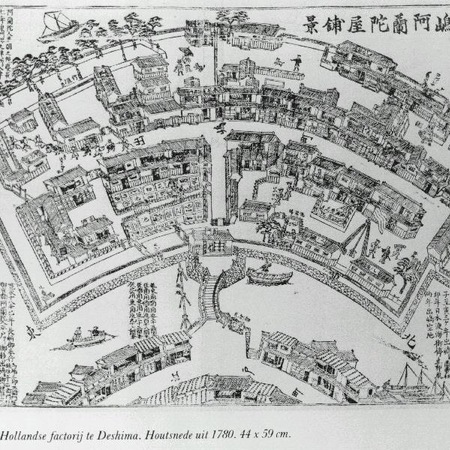During the course of the 17th century Japan cut all its contacts with the rest of the world. The VOC, which had been based on the island of Hirado until 1641, was forced to relocate to the small island of Deshima in the bay of Nagasaki. Well into the 19th century, the Company's employees were the only foreigners permitted to set foot on Japanese soil. However, their stay on Deshima, like the trade they did there, was subject to strict control by the Japanese government. The trade with Japan was especially important in the 17th century, when the VOC purchased large quantities of silver, gold and copper there in exchange for deer hides from Formosa, Chinese silk, and spices from the Indonesian archipelago. Towards the end of the 17th century, however, Japan began to become concerned about the enormous quantities of precious metals that were disappearing in this way. As a result of the numerous restrictions that were subsequently imposed, the number of VOC ships sailing to Deshima dwindled in the 18th century. Deshima was a small artificial island whose northern shore was linked to the town of Nagasaki by a stone bridge. VOC officials were only allowed to leave Deshima for the annual state visit to the court of the Shogun in Edo, and the occasional excursion under Japanese supervision. Conversely, the Japanese were not allowed onto Deshima, with the exception of a few officials, interpreters and Japanese ladies of pleasure. In Japan the official in charge of trade was the 'opperhoofd' or supervisor, while the 'opperkoopman' or senior merchant headed the trading base. In the 17th century the trading post in Deshima was the largest supplier of precious metals in Asia. However, after 1672 the governor of Nagasaki established fixed prices for imported goods, and the export of silver was forbidden. As a result the trade in Japan became progressively less profitable for the VOC, but smuggling blossomed. During the course of the 18th century trade between private individuals in Japan gradually gained the upper hand. Unlike elsewhere in Asia, in Japan the VOC was completely subject to the local authority. The VOC had learned that it could only achieve anything in Japan if it was prepared to ask on bended knee
literally. Illustrative of this state of affairs was the way the annual state visit to the Shogun in Edo was organised. These visits, which took two months, cost the VOC vast amounts of money. In addition to the valuable gifts for the Shogun, the Company had to pay in advance for the non-negotiable prices of inns, bearers, interpreters and provisions. After 1641 an 'opperhoofd' or supervisor was based at Deshima in charge of VOC trade with Japan. The Japanese Shogun decreed that the supervisor and his staff were only permitted to stay on Deshima for one year.
